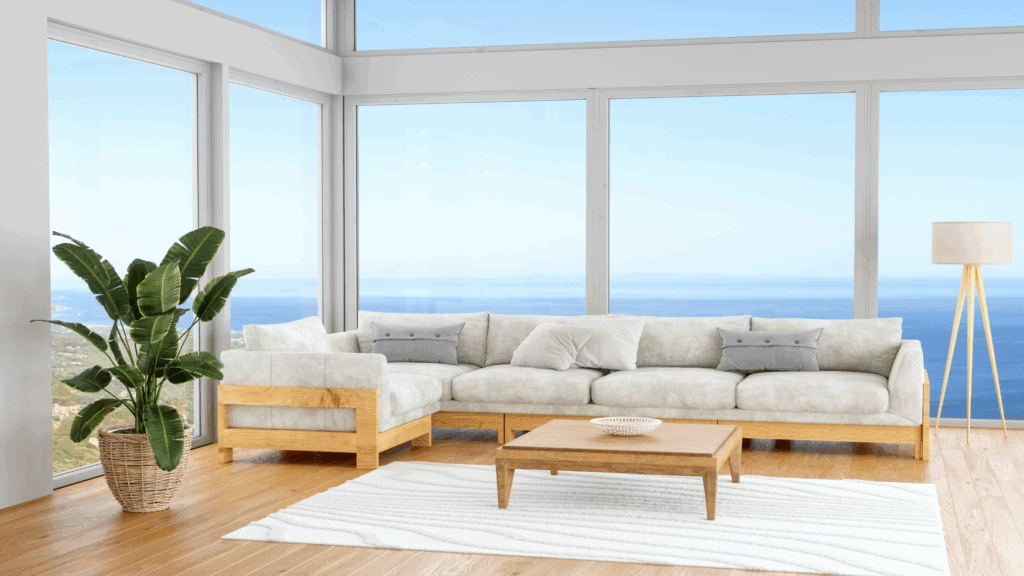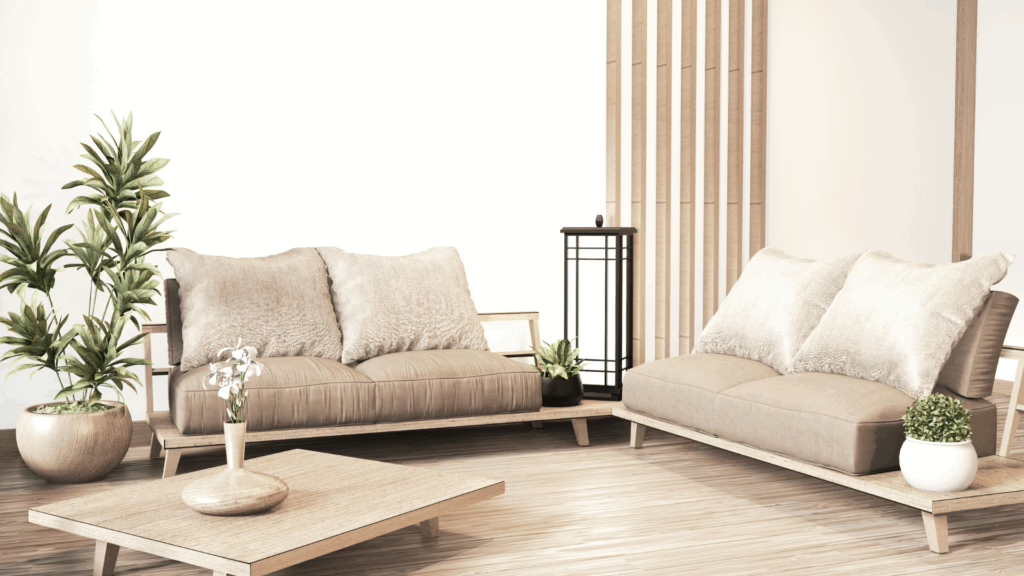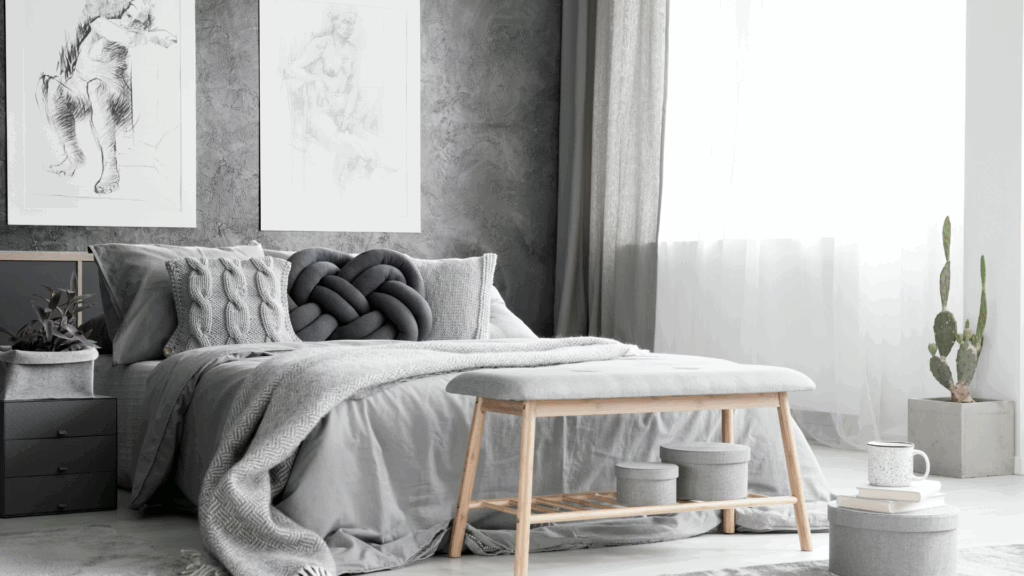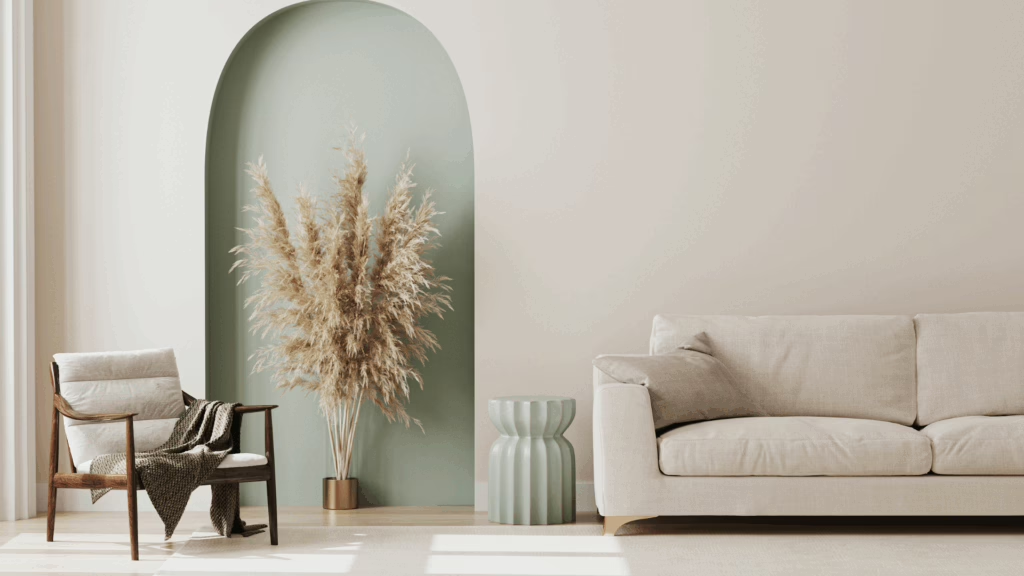Selling your current home while building your future home can be a juggling act. Coordinating with contractors, managing timelines, and possibly living in a temporary space requires energy, focus and resilience. In some cases, staging is not even a consideration. However in today’s competitive housing market, effective staging is essential. If executed well, proper staging can attract stronger offers, expedite the sale and ease the financial transition into your new home. In this article we will share tips on how to strategically stage your home while ensuring your dream house has everything you want and need.
However, in today’s competitive housing market, effective staging is essential. If executed well, proper staging can attract stronger offers, expedite the sale and ease the financial transition into your new home. In this article we will share tips on how to strategically stage your home while ensuring your dream house has everything you want and need.
The Role of Staging in
Staging is psychological marketing; it helps prospective buyers more easily imagine themselves living in the property. According to the National Association of Realtors (NAR), 81% of buyers say staging made it easier to visualize the property as their future home. In competitive markets, a well-staged home can lead to faster sales and higher offers, which is what sellers want!
New builds can be financially risky because most people have to sell their current home and find a place to live which requires finances. Therefore, a quick sale would increase liquidity, reduce stress, and help maintain the established construction timeline.Which is why the staging must be beyond reproach.
Professional stagers focus on lighting, furniture placement, neutral palettes, and depersonalizing the space. If you are doing the staging yourself, follow these principles for staging success. When staging do not stage for your taste; cater your audience: singles, families, rural, urban, suburban, etc.
Start With a Deep Declutter
Decluttering is the foundation of any good staging plan. Sort your belongings into categories: keep, donate, sell, or store. This helps reduce visible clutter while also getting a jumpstart on your eventual move.
A good rule of thumb is to remove at least 30% of your possessions from each room. Closets should appear only half full to signal ample storage space. Clear kitchen counters, remove personal items from bathrooms, and eliminate bulky furniture that makes rooms feel smaller.
If you are living in the home while selling, consider renting a storage unit or using portable containers. This keeps your essentials accessible while hiding away non-essentials that distract from your home’s best features.
Emphasize Neutrality and Light
Potential buyers bring their own styles and the best way to appeal to the widest audience is through neutrality. Neutral does not mean boring, it means creating a blank canvas that allows buyers to project their own vision onto the space.
Repaint walls in soft grays, whites, or beiges. Replace heavy or patterned drapes with light-filtering options to maximize natural light. Swap out personalized art and photos for simple, tasteful pieces. Light and neutrality go hand in hand, helping a space feel open, fresh, and welcoming.
According to a 2023 Zillow survey, homes with light-colored interiors and minimalist decor tend to receive higher online engagement and in-person interest. Making this small investment to neutralize your home can yield significant returns.
Prioritize Key Rooms
The good news about staging is that you do not need to stage every room equally. Focus your energy and budget on the spaces that have the greatest influence: the living room, primary bedroom, and kitchen.
Arrange living furniture to create conversational flow and openness. Add a rug to define the space, and use throw pillows and lighting to add warmth. In the primary bedroom, lean into hotel-inspired simplicity: fresh linens, minimal decor, and ambient lighting. The kitchen should feel clean and functional; there should be no clutter on the countertops. You can also add a bowl of fresh fruit or a live plant for a lived-in touch.
Unused or utility spaces like guest bedrooms, laundry rooms, or basements can often be simplified through organization. The key is to make sure they are bright, clean and clutter-free.
Work Around the Realities of Daily Life
Staging while still living in your home requires planning and compromise. Your home needs to be presentation ready at any time. Even if you have children or pets your home can be staged to accommodate these spaces, but you still need to be able to live and function in your home.
We recommend creating daily and weekly checklists to stay on top of cleaning and resetting staged areas. Store everyday items in bins or baskets that can be quickly tucked away before a showing. Limit activity to a few main areas to reduce wear and tear on freshly staged spaces.
Be upfront with your real estate agent about your family’s schedule and constraints. They can help arrange showings with sufficient notice and provide feedback regarding what works and what adjustments need to be made in your staging presentation.
Leverage Virtual and Hybrid Staging Tools
If staging your entire home in real life is not possible consider virtual staging as an alternative. Digital tools can transform empty or sparsely furnished rooms into stylish, welcoming spaces in listing photos.
While virtual staging may not replace an in-person experience, it is an increasingly important role in the online home search. According to Realtor.com, over 90% of buyers start their search online, and high-quality visuals can be the difference between a click-through or a pass.
Hybrid approaches—such as physically staging only key rooms while virtually staging others—can help balance cost and effectiveness. Just be sure to disclose virtual modifications in your listing to maintain buyer trust.
Consider the Buyer’s Mindset
One of the most overlooked aspects of staging is understanding who you are staging for. While it is natural to focus on cleaning, organizing, and neutralizing your space, effective staging ultimately comes down to psychology. You are creating an emotional experience for someone imagining their next chapter in their lives.
Think like a buyer. What kind of lifestyle does your home promote? A young couple shopping for their first home is looking for something different than a downsizing retiree or a growing family. Your staging choices should reflect not only your home’s strengths, but also the likely aspirations of your ideal buyer. If you live in a family-oriented neighborhood with good schools, stage a secondary bedroom as a kid’s room or study nook. If you are in a trendy urban area, highlight open-concept living or multipurpose office space that caters to remote workers.
Subtle cues go a long way. A breakfast tray on the bed, a cozy throw draped over a reading chair, or a minimalist desk setup in a quiet corner all tell a story about how the space can be enjoyed. These lifestyle signals help buyers mentally move in before they even make an offer.
Real estate psychologist and author Dr. Karen Winter, who has consulted for realtors in markets across the U.S., explains: “Buyers do not just evaluate space; they interpret feeling. Staging that connects on an emotional level consistently outperforms generic or overly decorated homes.” Her research shows that homes with thoughtful staging strategies generate more foot traffic and higher offer rates within the first two weeks of listing.
Additionally, staging can shift perceptions of value. A small room can feel more spacious with the right scale of furniture. A dated kitchen can still feel charming if it’s meticulously clean and staged with modern accessories. In many cases, staging helps buyers overlook flaws, or even reframe them as “character.”
Also consider seasonal staging. In spring and summer, lean into fresh flowers, light fabrics, and vibrant accents. In fall or winter, add touches of warmth like textured throws, candles, or subtle holiday decor (avoid anything overly personal or religious). Seasonal accents make the home feel current and cared for, without overwhelming the senses.
Finally, never underestimate the power of scent. A clean-smelling home leaves a better impression than one doused in artificial fragrance. Opt for subtle, natural options: fresh-cut citrus, baked goods, or lavender sachets can evoke comfort without overpowering.
Understanding what motivates a buyer—and tapping into that mindset—can transform your staging from functional to irresistible. When your home tells a story that aligns with the hopes and lifestyle of its potential next owner, it becomes more than a property. It becomes a promise.
Do Not Overstage: The Importance of Balance
While it can be tempting to stage every square inch to perfection, there is such a thing as overstaging. An overstyled home can feel more like a showroom than a place to live, leaving buyers feeling disconnected rather than inspired. Instead of trying to impress with flair, the focus should be on creating clarity and emotional resonance.
Buyers do not want to feel like they are intruding in a perfectly curated magazine spread—they want to imagine what it is like to make the space their own. Avoid excessive use of props or themes, and steer clear of color palettes that feel trendy but polarizing. Aim instead for a timeless look with a few distinctive, memorable touches: a unique mirror, a sculptural plant, or a beautifully lit reading nook.
Professional stagers often recommend leaving “white space”—areas where the eye can rest and buyers can fill in the blanks. This could mean leaving a few empty shelves, resisting the urge to over-accessorize a coffee table, or keeping the walls free of busy artwork. These decisions help avoid sensory overload and allow the structure and layout of the home to speak for itself.
Ultimately, the most effective staging walks a fine line between curated and authentic. It should highlight your home’s best attributes while leaving just enough room for the buyer’s imagination to take over. When in doubt, simplicity wins.
Stage for the Unexpected: The Final Stretch
Even after you’ve staged, listed, and shown your home, surprises can arise. A buyer might request a second showing on short notice. A home inspector may uncover small issues you hadn’t considered. Or a deal could fall through, extending your timeline unexpectedly. Tha is why it is important to think of staging not as a one-and-done process, but as a living strategy that you adapt in real time.
Create a weekly checklist to revisit key spaces and refresh as needed. Are flowers wilting? Is that throw blanket still neatly arranged? Have personal items started to creep back into visible areas? Routine touch-ups ensure your home remains in its best light from the first showing to the final walkthrough.
Also consider preparing a plan B for furniture or decor that needs to be pulled quickly if your construction timeline accelerates. Whether it is borrowing pieces from a friend or renting from a local staging company on short notice, having options ready can help you pivot smoothly.
Flexibility and consistency are the hallmarks of successful staging while building. With the right mindset, a strong support team, and a well-thought-out plan, you can balance the chaos of construction with the calm polish of a show-ready home. The end result is worth the effort: a fast, profitable sale and a seamless transition into the new space you’ve worked so hard to create.
TLDR: Key Takeaways
-
- Start decluttering early and remove at least 30% of items to help buyers visualize the space
-
- Emphasize light and neutral tones to create an inviting, broad-appeal atmosphere
-
- Prioritize staging in the living room, kitchen, and primary bedroom for maximum impact
-
- Use checklists to maintain a staged look while still living in the home
-
- Consider hybrid or virtual staging to cut costs while maintaining visual impact online
-
- Align your staging and moving plans with your home construction timeline
-
- Understand your likely buyer’s lifestyle and stage accordingly to spark emotional connection
-
- Avoid overstaging—leave breathing room for imagination and authenticity
-
- Stay flexible to handle unexpected delays or quick turnarounds
-
- Regularly refresh your staging strategy until closing day to keep your home competitive
